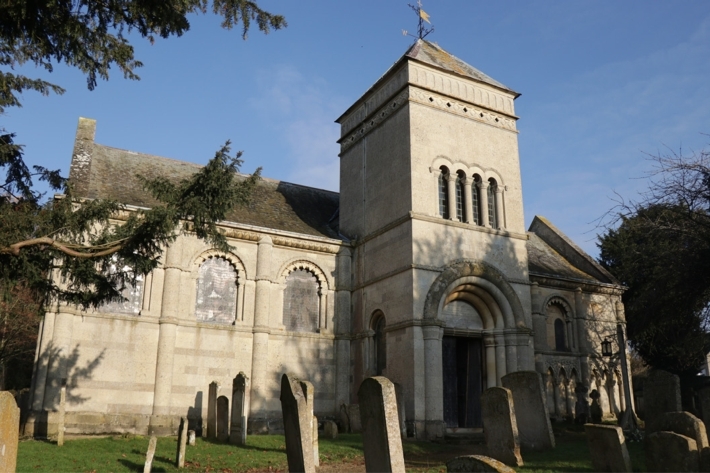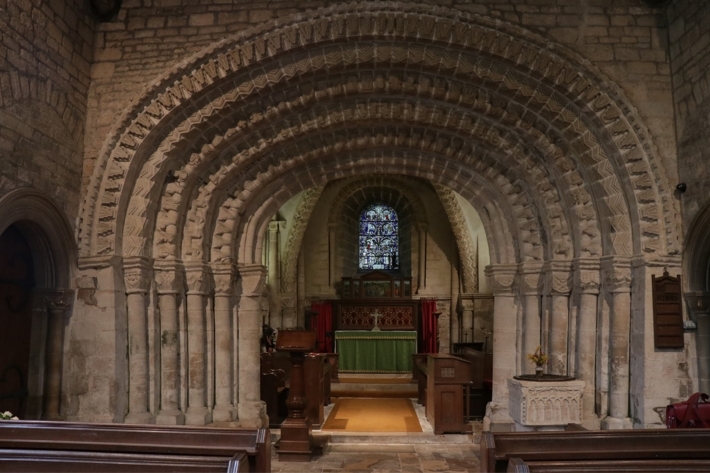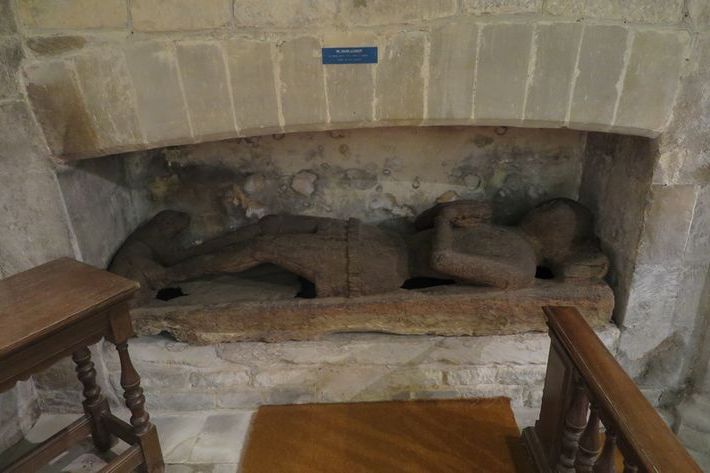St Peter's Church, Tickencote, Rutland
- Overview
- Map
- What's nearby
The church is Norman, however the exterior mostly dates from a major rebuild by Miss Eliza Wingfield in the late 18th Century.
Stepping inside St Peter's your eye is drawn to its most impressive feature; a splendid Norman arch. The arch was built between 1130-1150 and features six bands of intricate carvings including some fantastic beak heads, creatures and grotesques. The arch has become distorted due to the weight of the seven feet thick wall above.
Within the chancel admire the incredibly rare sex-partite vaulting with a fine Norman boss. There is also a Romanesque font and some fine decorative Victorian stained glass.
You can now help support the work of the Churches Conservation Trust in caring for St Peter's by text:
To donate £5 please send "110" to 70970.
To give £10 please send "110" to 70191.
-
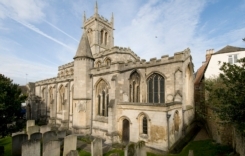
St John's Church, Stamford, Lincolnshire
2.90 miles
A blessing of angels and green men
-
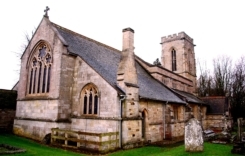
Holy Cross Church, Burley, Rutland
6.67 miles
An exemplar of medieval elegance
-
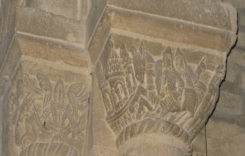
Church of St John the Baptist, Wakerley, Northamptonshire
6.74 miles
Some of the finest carved capitals in England
-
Access information
St Peter's sits near the entrance to the village of Tickencote, set back from the road.
Parking is available on the roadside alongside the churchyard. Please park with consideration for our neighbours.
-
Disabled access information
Access is via a ramp into the church. Due to the historic nature of our buildings they can have uneven floors. There are steps inside to access the chancel.
-
Transport
Bus route numbers 4R/9/184/185.
Nearest railway station: Stamford (3.2 miles).
-
History & Further Information
St Peter’s was first constructed in around 1150, but fell into disrepair in the subsequent centuries. The huge Norman arch has been enclosed within the new church and the rare sexpartite vaulted ceiling of the chancel was saved and rebuilt piece by piece. The current nave is built in the same area as the original Norman church and the arch may have been the original entrance. In 1792 the nave was demolished and rebuilt.
The work was carried out by Samuel Peyps Cockrell in the employ of benefactor Lady Eliza Wingfield and the result is a decorative 18th century exterior with a very different interior. Externally the stonework is decorative with wall arcades, moulded arches, triple clustered shafts, carved detail and double billet string courses which also form hood moulds to the windows. The chancel is especially elaborate, followed by the upper stages of the tower, then the somewhat plainer nave. The fine ashlar stonework looks to be in very good condition.
The large Norman arch is decorated with differing interesting Norman designs on each order. The first is decorated with billet hood-moulds, the next with beak-heads, and then a lozenge pattern. Grotesque human and animal heads with foliage interspersed between take the most varied order stage and are of such unique quality that they will require study. The supporting column capitals, which all differ slightly in decoration and size on-top cylindrical columns have been pushed slightly by the settling of the building and the weight from above. The wonderful chancel vaulting is also very unusual for this time period, is an example of sexpartite stone vaulting and made up of great swathes of tentacle-like with a decorative roof boss in the centre showing a monks head and two bears.
This style of vaulting is possibly not only incredibly rare, but may be the earliest example in Britain. The font is a wonderful example of Romanesque design, dating to the 13th century, slightly later than the arch and is decorated with faces in a square design and sits to the right of the chancel arch. In the chancel there is a 14th century wooden knight effigy in a recess, who is said to be Sir Roland de Daneys who fought in France and was knighted at Carcassonne in 1355.
-
Volunteering Opportunities
To volunteer at St Peter's, or for further information, please contact [email protected]
CCT has always valued the support that local people provide to their churches. Now more than ever, this support is critical in keeping these historic churches vibrant and open for their communities. Find out in this section how can support your local church, be it as a one-off or regular time commitment here: Find out more about volunteering opportunities at CCT.

